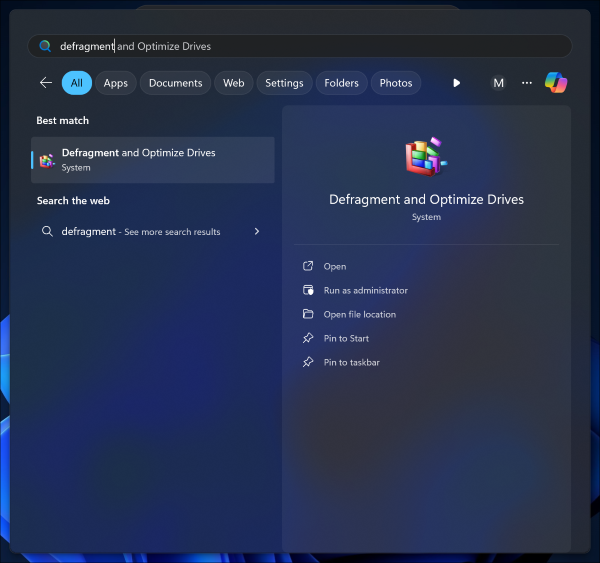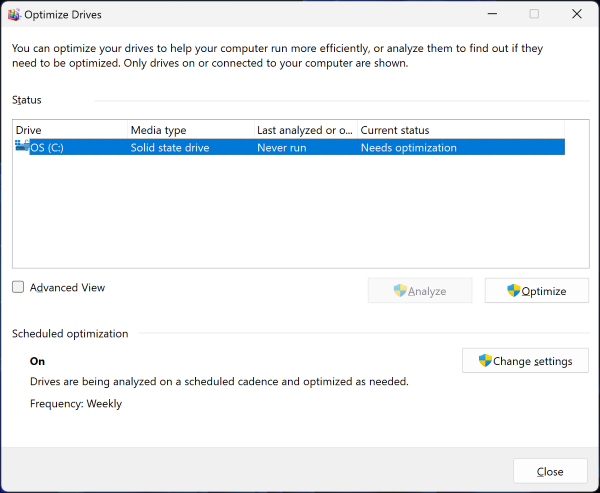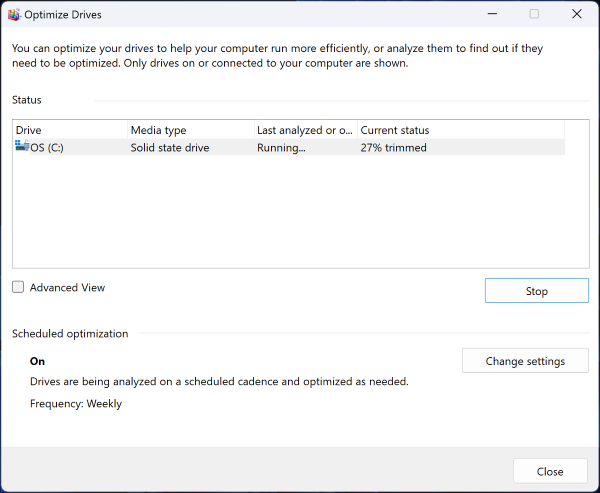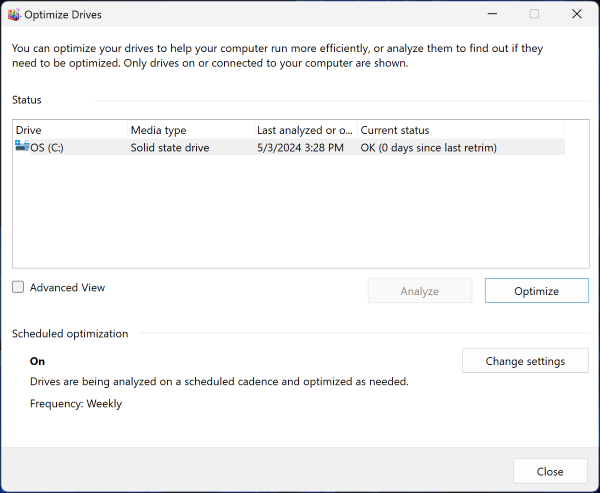Defrag Your Computer to Boost Speed with the Disk Defragmenter in Windows
Summary: Learn how to defrag your hard drive with the disk defragmenter in Windows 11 and Windows 10. Improve performance by reducing fragmentation and speeding up your personal computer.
Instructions
Defragmentation, also known as defragmenting or defragment, is the process of rearranging the data on a hard disk drive (HDD), for efficient storage and access.
Defragmenting a hard drive can improve a computer's performance and speed. To reduce fragmentation, a disk optimization tool typically uses compaction to free up larger areas of space. Certain disk defragmentation tools might try to keep smaller files together, especially if they are often accessed sequentially.
Fragmentation does not happen as often in Linux-based file systems as the Linux journaling system stores the data across multiple locations in the disk and automatically moves it around when it senses fragmentation.
The process of finding and consolidating fragmented files is called defragmentation. Disk Defragmenter consolidates the fragments to one location on the disk drive. As a result, Windows accesses files faster, and new files are less likely to be fragmented.
If you are experiencing a system performance issue, try these quick steps to resolve system performance issues on a Dell computer.
Why is defragmentation needed?
Defragmentation can solve and mitigate problems, such as slow speeds, freeze-ups, and extended boot times of a computer. If there is not enough contiguous space to hold, complete files on a hard drive, files can become fragmented and the storage algorithms on the disk separate the data to fit it inside the available space. Defragmentation consolidates these fragmented files so all the related pieces are aligned together. Once the hard drive is defragmented, the system performance improves because all the jumbled-up data is reorganized and stored appropriately.
Regularly running the Disk Defragmenter utility improves system performance. When the computer saves files, it fragments the files into pieces and saves the pieces in various locations on the hard drive. Windows takes longer to access files because it requires additional disk drive reads to find the pieces.
Some symptoms of fragmented data on hard drives are:
- Slow applications
- System crashes and stops responding
- Slow backup times
- Reduced data transfer speeds
- Slow boot-up times
How often do you should you defragment a hard drive?
The frequency of defragmenting a hard drive depends on its usage. If you shut down your computer after each use, the integrated defragmentation utility in Windows might be prevented from running automatically. In such cases, running the defragmentation utility once a month on a hard disk drive (HDD) is recommended.
It is not recommended to defragment solid state drives (SSD).
How to run Disk Defragmenter in Windows 11 or Windows 10
- Click Start and search for and open Defragment and Optimize Drives.

-
In the Optimize Drives window, choose a hard drive to defragment, and then select Optimize. If the hard drive is not listed, try to reconnect the hard drive or check the Advanced View option.

-
The hard drive is analyzed and defragmented.

-
After the defragmentation is complete, the current status shows OK.

Troubleshooting Disk Defragmenter
If you encounter problems running Disk Defragmenter, try the following:
- Exit other programs before beginning disk defragmentation, including programs running in the background.
- Disconnect from the Internet and then turn off anti-virus and anti-spyware programs.
- Log in as Administrator or as a member of the Administrators group to run Disk Defragmenter.
- Check to see if the computer is on a network. Network policy may prevent you from running Disk Defragmenter. Remove the computer from the network to correct this condition.
- Ensure that the hard disk being defragmented has at least 15% free space.
Error Messages
If the message Drive Contents Have Changed: Restarting
appears while running Disk Defragmenter, see the Microsoft Knowledge Base Article 
Frequently asked questions
Here are some frequently asked questions about disk defragmentation.
It is not advised defragmenting solid state drives.
The fragments are consolidated into a single area on the disc drive by the disc defragmenter. Windows can access files more quickly as a result, and new files are less likely to be fragmented.
Depending on how large and fragmented your hard drive is, Disc Defragmenter may take a few minutes to many hours to complete. Your computer can still be used while it is defragmenting.
If your data is stored in an area that has bad sectors, you can examine them and prevent damage from occurring because of defragmentation.